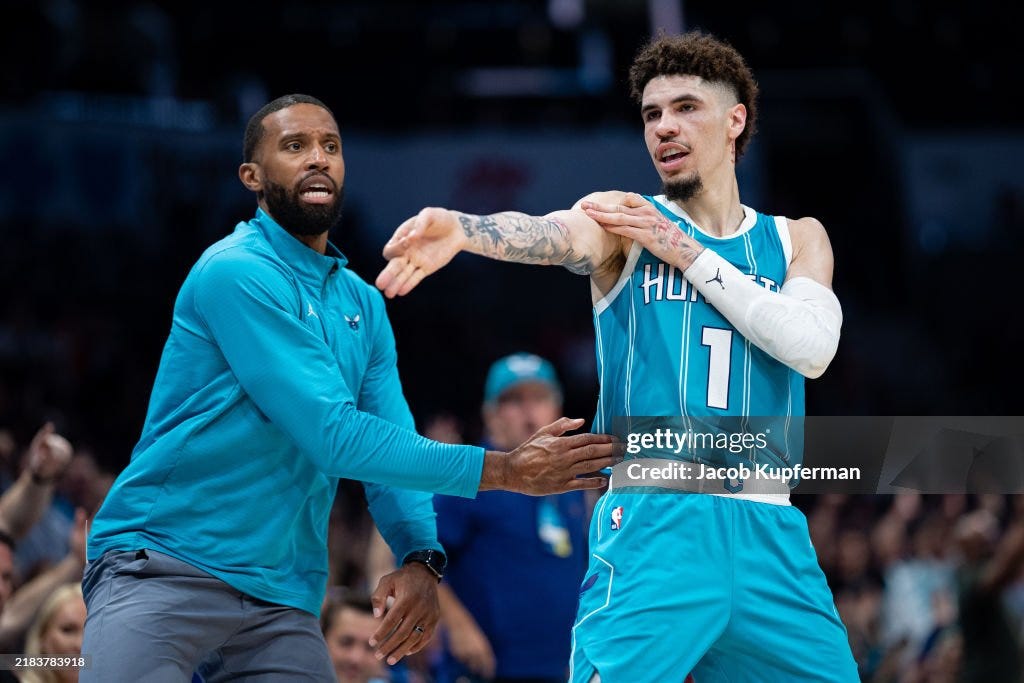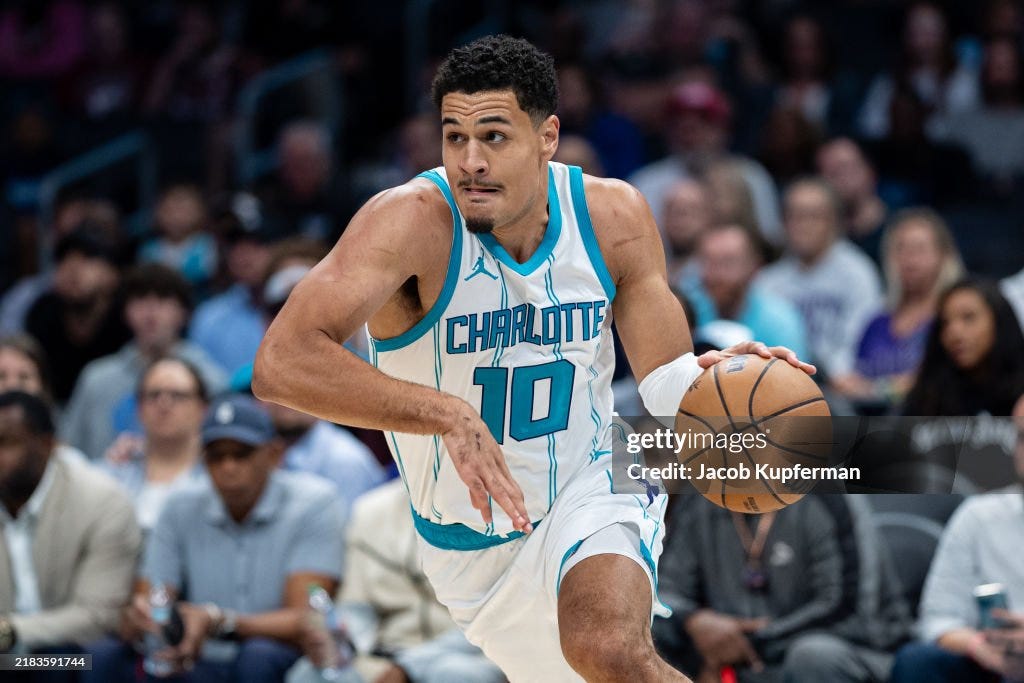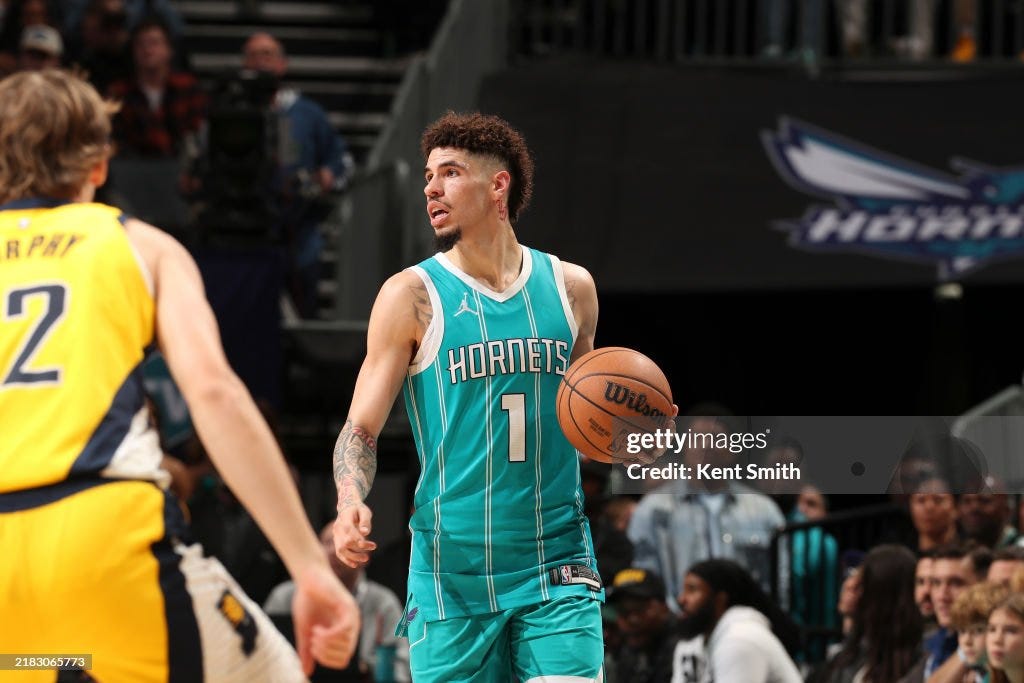Melo and Charles Lee are bringing the playoffs back to Charlotte
Don't say it loudly, but this could be the year.

CHARLOTTE — If you had to describe Charles Lee as a coach, most would turn to abstract sayings rather than concrete tactics. He emphasizes grit, aggressiveness, and hustle. They’re blazingly fast, shoot in dozens, and crash the glass on nearly every offensive possession. On defense, they suffocate you and probe with active hands Lee won’t see in-depth analysis from Zach Lowe or Brian Windhorst because 1) he’s one of the league’s newest coaches, with only eight games of experience with one of the league’s freshest franchises, and 2) this is Melo’s team.
It’s not an exaggeration to say that this Hornets team lives and breathes through the tattooed superstar. He’s playing an MVP-caliber season, averaging 28.4 points per game (eighth in the league), five rebounds, and six assists. He’s just as flashy ad stylistic as he is effective. He does his own thing. He could shoot 0/5 in one quarter and score 20 in the next. The key to letting this Hornets team prosper is letting Melo be Melo. And that’s what Lee has done.
Lee and Melo are quickly becoming one of the league’s best coach-player duos because of their interesting, contrasting mix. Melo is a player of chaos and disorder — he averages 4.6 turnovers a game (!!) but is still somehow an extremely effective ballhandler who gets the Hornets’ shooters good looks. Lee is a coach made of order and discipline — descending from the Joe Mazzulla school of hard knocks. His team conditions like your hometown varsity team — heavily. They lead the league in offensive rebounds, they suffocate your favorite team’s offense, and they get out in transition without fail.
And that (despite being under .500) has powered them to the fourth seed in the East. Hold your applause.
All of Charlotte’s breakout wins have two common ingredients — Melo going off and a spirited defensive performance from the rest of the Hornets. We’ll cover Melo first.
Every NBA team needs a star in this modern era and that’s pure fact. The Hornets’ resident star is Melo. He’s a star because he somehow blends insane vision, imaginative passes, a deep bag, and a solid three-point shot. He’s one of the league’s most lethal threats on offense because he plays so freely and is so hard to stop. Sag off him to prevent the pass? Take a logo three down your throat. Double-team him? Another guy will shoot. Pick your poison.
The perks that come with being a superstar are unreined freedom. Melo is free to shoot and pass as much as he likes. He’s seen ugly shooting lines before — 10-29 in a 20-point win over Indiana, and 7-20 in a win over Toronto, but he gets his buckets, regardless. He also reliably finds his teammates. He’s reached at least six assists six times this season. He’s a dark hole — sucking in opponent players will inevitably create space somewhere around the court. Add some of the best passing in the league and you get a points machine. He’s a rookie coach’s wet dream.
Well, except for the rampant turnovers. And the lackluster defense. And the inconsistent nights. Don’t get me started on the injuries. We’ve seen glimpses of three vices this season, and don’t be shocked if he doesn’t play all 82 games.
But for the most part, Melo has been the difference between a 4-5 season record and a 1-8 one. In all of Charlotte’s tight games so far — Houston, Toronto, Detroit — the common denominator has been a solid Melo scoring performance, usually towards the end of a game.
But although Melo has put up some impressive statlines this season, it would be a mistake to pin the success of Charlotte as entirely on Ball. Melo wasn’t the one who scored a putback layup as time expired to give the Pistons their third win of the season — that was Brandon Miller. Melo isn’t in the race for Sixth Man of the Year — that’s Tre Mann. Melo hasn’t spearheaded one of the most impressive rebounding corps (missing its starting seven-foot center) — that’s Nick Richards.
The common factor unifying the three players I named — and the rest of the roster — is Charles Lee. Lee has been the man to take the random assortment of role players, 3-and-D player and league journeymen and make it into something comprehensible — with a clear threat. Although Lee has brought the guiding ethos to this team now synonymous with the Hornets, he’s also established some clear instructions and building blocks.

To start out, the Hornets shoot the second-most threes in the league and make the third-most at a 36% clip. They’ve leaned on a jumble of shooters to create this production, including Miller and Mann (both shooting at 40%), Seth Curry (48%), and Josh Green (47%). A shockingly huge chunk of their scoring comes from three-point shooting, which was why signing Curry and Green in the offseason was so important. When Bridges, who is shooting at a subpar 28%, finally heats up and finds his true form, the Hornets could be a shockingly scary team.
Although Lee’s team plays fast, they’re shockingly one of the least transition-oriented teams in the league. The Hornets have the third-least points per game coming off fastbreaks but lead the league in screen assists. Thank Nick Richards. Richards leads the league on points from screen assists (14.2 ppg). He’s very skilled both setting screens and coming off it. It helps that the 6’10 behemoth also has a silky touch under the rim.
Richards is a key component of the defense Lee has worked hard to rebuild. The Hornets struggled mightily in rebounding and found it difficult to frustrate opponents under the rim. The opposite is true this year. Richards, Tidjane Salaun, and Moussa Diabate have made up one of the league’s most intimidating frontcourt. They’ve made their opponents shoot less, from farther away, with less accuracy. That’s a win in my book.
All these components — Melo’s overall brilliance, the smart scoring of Miller, the rim protection of Richards, and the innovative coaching of Lee — has taken the Hornets to the fourth-seed in the Eastern Conference. If things keep going like they’re going — the Hornets surging when they need to the most — we could see playoffs in Charlotte for the first time since the era of Kemba Walker and Nicolas Batum.
Nothing’s guaranteed, of course. The Hornets have mismanaged the ball spectacularly, they’re inconsistent shooters, and they’ve been smited with a lack of depth. But still, the future is bright at Spectrum Center — where they boast a top-ten attendance rate.




